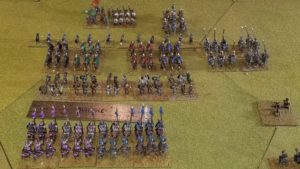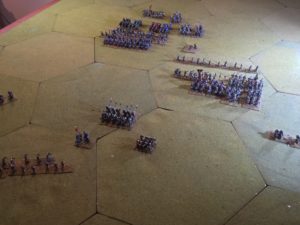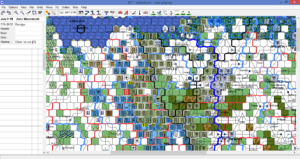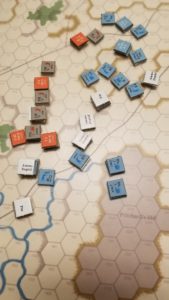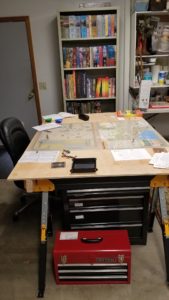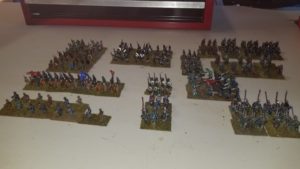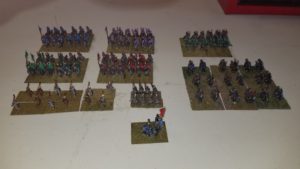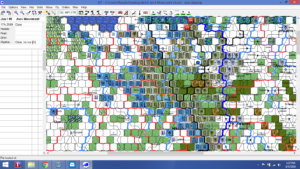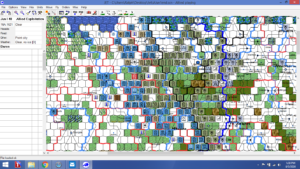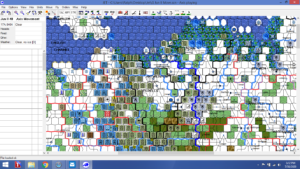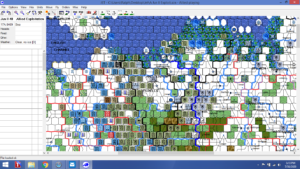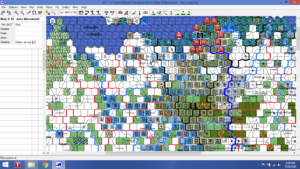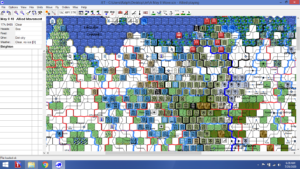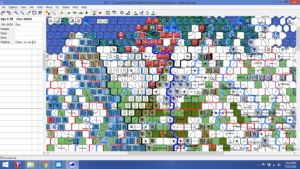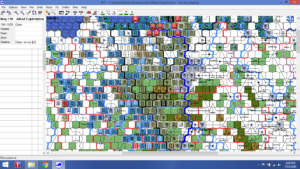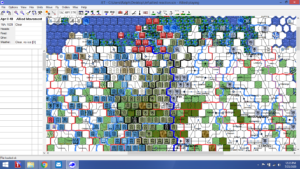Now in Turn 10 of my latest WRG 6th Edition game. As hoped for, the going is smoother. Not just rules knowledge, but my tactical sequencing has improved.
By this I mean the staged use of troop types. Light infantry is given time to skirmish, heavier infantry deploys methodically and, most importantly, the cavalry (especially the Byzantines) wait for the proper time to advance and charge. I know, basic stuff, but that’s what I lose sight of when grinding through a new rules set.
This sequencing seems especially important with WRG 6th Edition. If you miscalculate distances between those three troop types, you wind up with units stacked up, without room to maneuver. The results are ugly and, to paraphrase Dean Wormer “Disordered, Shaken, Burst Through and Routed is no way to go through a WRG 6th game.”
This crummy photo from my first game illustrates what can happen.
I kept the ruler in the photo (all how-to-do-it references for wargame photos stress not to leave game paraphernalia out of any shot – which I don’t get because any table I’ve played on is covered with rulers, dice, tables, charts and rule books) spatial reference.
The Arabs are at the top of the photo, Byzantine cavalry at the bottom. The light infantry has evaded through the heavier infantry and cavalry , with the infantry now blocking any cavalry response without disruption, either by a countercharge or rout. And, what the hell will the body guard at the very top of the photo do?
For better or worse, 6th Edition RAW (Rules As Written) won’t let you just slide units all over the battlefield. No “fast and furious” here. Sloppiness has its consequences.
As mentioned in my earlier posts, these rules are difficult. At this point on my learning curve the big problem is that answers to tabletop situations are often spread out through two or three rules sections. This is especially true for rout, pursuing, and rallying. While there are sections focused on each topic, the nuance is buried in movement, or dicing for arrival or some other sections. If I was a stronger person, I’d track all of this down and consolidate into a situation-specific write-up.
Anyway, I’m fortunate that I can enjoy the game at a leisurely pace and not pressed to finish in, let’s say, an afternoon.
